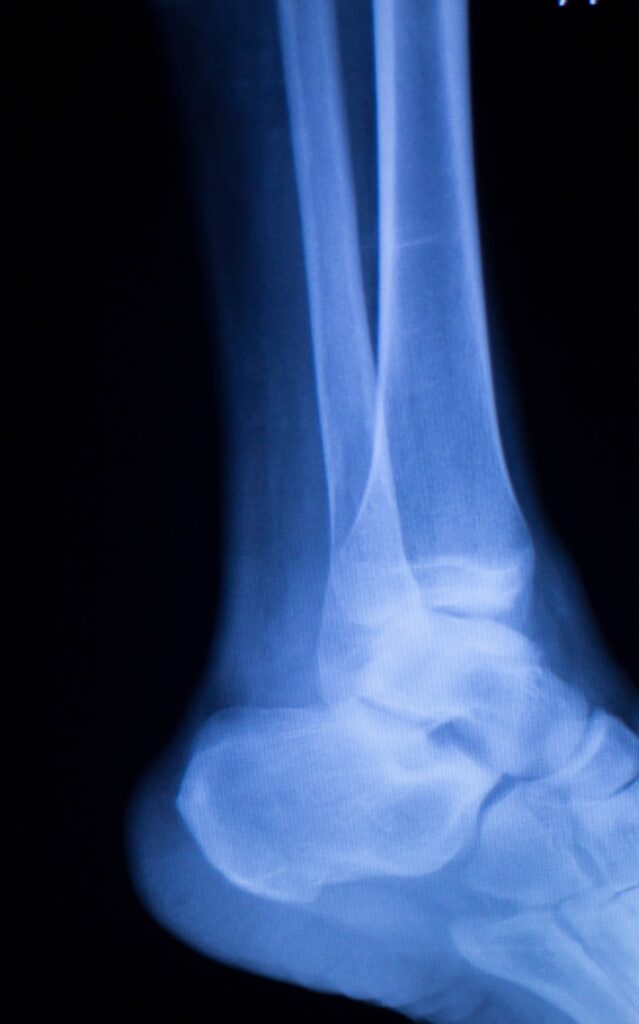
Are you a runner in Sydney, training for the much anticipated 2023 City 2 Surf in August? Many people have been bumping up their training recently, and this is a time when runners may start to feel some shin pain. Often this can be managed easily if caught early, but if you’ve started feeling some pain around your shins, often just labelled “shin splints”, then you may be wondering whether it’s wise to keep running or if you should take a break. In this article, we’ll discuss the common causes of shin pain in runners, such as shin splints and stress fractures. Plus we’ll give some simple advice on when to stop running and get your shins checked out to ensure a safe and successful training journey.
What Causes Shin Pain In Runners?
The most common cause of shin pain in runners is “shin splints”, more formally known as Medial Tibial Stress Syndrome (MTSS). MTSS causes pain along the inner side of the tibia, or shin bone. It is usually felt in the mid-low part of the inner shin. It is usually aggravated by high-impact activities like running and jumping.
MTSS is actually a collection or continuum of diagnoses, rather than just one isolated pathology. It is believed to occur due to either the calf muscle pulling on the bone, causing traction and discomfort, or an accumulation of micro traumas that lead to stress on the bone, resulting in pain and inflammation of the bone as well as soft tissues. Often the early stages are just related to soft tissue inflammation, close to where the muscle attaches to the bone, but as the condition gets worse it progresses to inflammation of the bone lining (called “tibial periostitis“), and if left to progress further can result in bone stress reactions and stress fractures.
An early goal of treatment for shin pain in runners is always to focus on preventing the progression from soft tissue injury, which is fairly easy and relatively fast to manage, to bone stress injury, which is harder and takes significantly longer to manage. This is where the decision as to whether you should take a break from running to let things settle becomes important.
Understanding Bone Stress Injuries And Stress Fractures

Bone stress reactions and stress fractures in the tibia are a more concerning cause of shin pain. It can also happen in the fibula, the other shin bone, although this is much less common. Normally, our bones experience micro-cracks that heal without issues during proper recovery. However, repeated mechanical force exceeding the bone’s strength, coupled with inadequate recovery, can lead to an imbalance between the cracks and repairs. If the rate of bone micro-cracks caused by loading during running is faster than the rate of repair, which happens during recovery between runs, then a bone stress injury can occur.
In a bone stress injury there is bone trauma, but no specifically defined fracture line. However, if you keep running and overloading the bone without giving it time to recover, then a definite fracture line will result and this is when a bone stress injury had progressed to a bone stress fracture. The severity of the fracture can range from partial to complete.
How Do I Know If I Have A Stress Fracture Or Bone Stress Injury?
The most accurate way to tell if you have a bone stress injury or stress fracture is to have an MRI. If your physio is concerned that your shin pain may be due to bone stress or a stress fracture, they will recommend that you have one. This is important, because if the bone is involved you will need to take a break from running.
However, if managed well and early, most shin pain in runners can be kept in the “soft tissue injury” category, and no MRI is needed. But knowing when you need to be concerned can be difficult, especially as many runners will often have some form of niggle or discomfort in their legs most of the time! And we don’t want to be heading off for MRIs, or even seeing your physio, at the slightest symptoms. So, what simple tests can you do at home to give you an idea if it’s ok for you to keep running, or if you need to get your shins checked out?
Simple Tests To See If Shin Pain Is Likely To Be Shin Splints Or Due To Bone Stress Injury/Fracture
Ok, we want to emphasise here that this information is general, and you shouldn’t take this as specific medical advice regarding your particular situation. If you aren’t sure about the cause of your shin pain, you should see your physio and get it checked. But these simple tests can help you decide if you need to be concerned about any bone involvement in your shin pain.
Test 1 – Palpation: Gently feel along your shin bone, especially the inner (medial) border. If you notice tenderness at a specific point on the bone, particularly in the lower 1/3 of your shin, it may indicate a potential stress reaction/fracture. Conversely, general pain along the shin, without a specific point that is much tender than the rest, suggests shin splints (MTSS).
Test 2 – Hop Test: Attempt to hop a few times on one leg. If you are unable to hop or feel significant pain during the hop, it could be a sign of a possible stress reaction or fracture. In MTSS, there may be some discomfort but you can usually hop a few times repeatedly. If there is bone involvement, hopping is usually very painful or impossible.
Should You Stop Running Due To Shin Pain? Some Pain Markers To Consider
As discussed above, identifying whether your bone is becoming involved in shin pain when running is an important point. As well as the two tests described above, thinking about how your pain behaves during and after your runs can also help you decide whether it’s ok to keep running or not. The most common pain markers that we use are;
1. Pain Severity: Assess your pain on a scale from 0-10, with 0 being no pain and 10 being the worst imaginable pain. If your pain score exceeds 3/10, it’s advisable to pause your running.
2. Pain During the Run: If your shin pain starts mildly and progressively worsens as you continue running, it’s time to either stop or significantly reduce your running volume.
3. Pain After Running: Even if your pain during the run remains below 3/10, if it persists or increases after you’ve finished, you should take a break from running. This rule applies for the full 24 hours post-run. A good rule to keep in mind is that the morning after a run should feel the same as any other morning. If the mornings after your runs feel worse than after non-running days, you need to reduce your running volume or take a break from running.
4. Night Pain: Experiencing shin pain at night, difficulty sleeping, or persistent pain that is not relieved by rest should definitely prompt you to stop running and see a physio. Persisting pain after running that continues into the night or wakes you up, is another possible sign of bone stress reaction/fracture.
5. Altered Gait: If your shin pain alters your running stride, steps, or movement, you should to take a step back from running. As well as potentially progressing your shin pain from soft tissue to bone involvement, an altered gait can lead to additional injuries in other parts of your body and indicates. If you can’t run with your normal gait, then this is a good indication that the pain levels are too high to continue running.
The Last Word On Shin Pain When Running
As running physios, we always try to keep people running whenever possible, maybe just with less volume/distances. We definitely don’t subscribe to the “you’re a bit sore so lets stop everything” philosophy! But if you think that, after using the above pain markers and doing the two quick tests, you may have a bone stress reaction or fracture then you should stop running and get it checked out with your physio as soon as possible. If we’re concerned then we will usually recommend an MRI to get a clear diagnosis.
However, just because you have a little shin pain with running, it doesn’t mean that you have to panic, stop running, or drop everything an get it scanned ASAP. Think about the above pain markers, and if you’re comfortably within these guidelines then maybe just a temporary reduction in volume or a short break from running is all that is needed. But if you’re answering “yes” to the above markers or tests, and especially if your symptoms have been getting significantly worse lately, then it would be wise to see your physio to get things checked before you continue running.
Sydney Running Physio
As discussed above, stopping shin pain progressing from a relatively simple soft tissue injury into a bone injury is a key goal of early management. But another goal is to avoid being too conservative and stopping someone running when they could actually continue running, perhaps just at a lower volume or longer recovery. This is where seeing a physio with specific expertise in running injuries can help.
Our team at the Central Performance Running Centre love working with runners of all abilities, from recreational to elite levels. We provide a one-stop-shop for runners in Sydney, covering everything from running coaching to specialised running physio and strength and conditioning. We have particular expertise in managing runners with shin pain and bone stress injuries.
More Information On Shin Pain With Running
Because our physios and strength coaches work with so many runners, we also have lots of information for runners on how to avoid and manage shin pain and bone stress injuries. Check out these posts for more info;
We love working with runners of all abilities. If you’d like to ask a question about a running injury or how to improving your running, please click below for some free advice. Or if you’d like to see one of our running physios you can book online.

